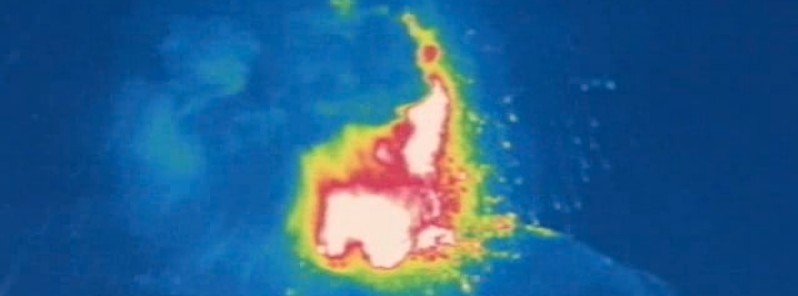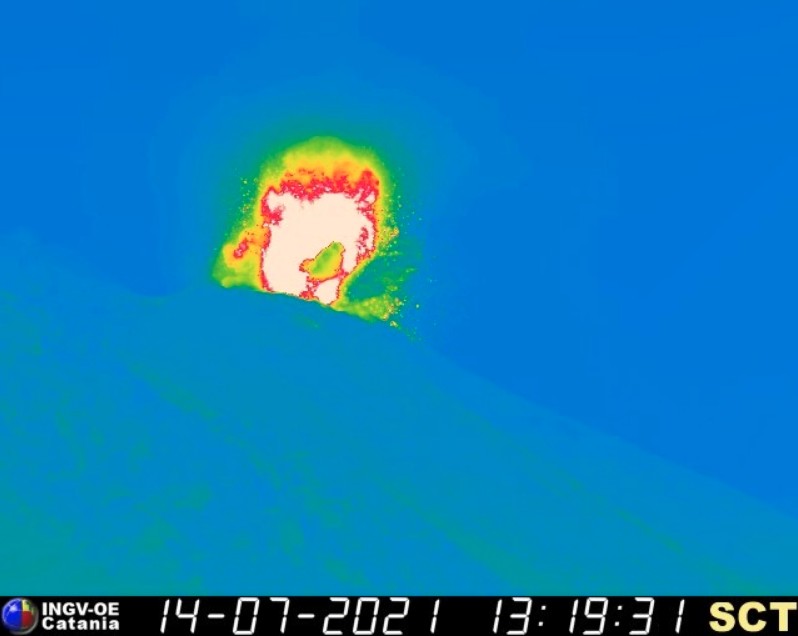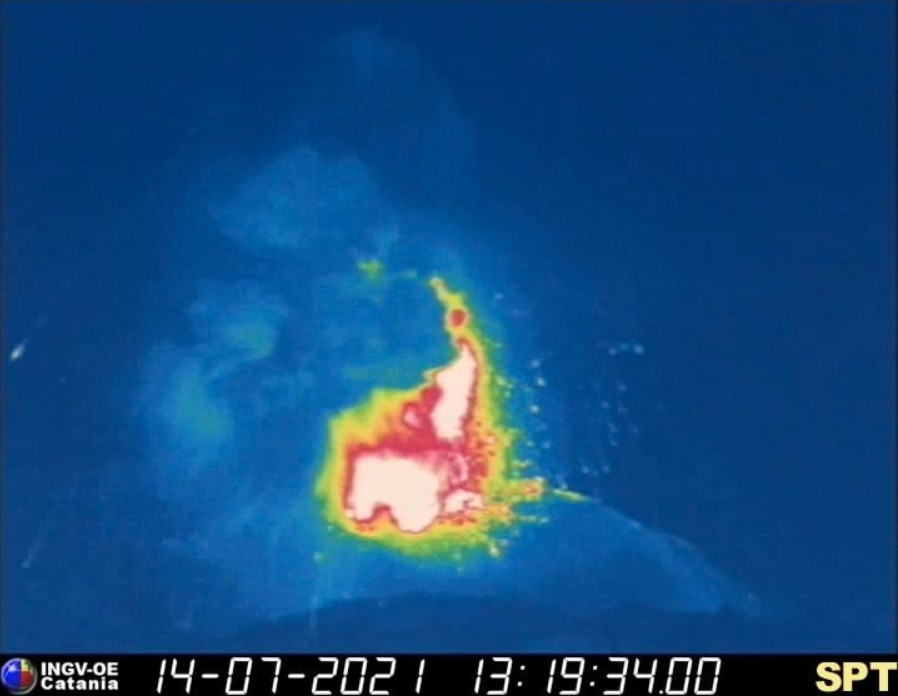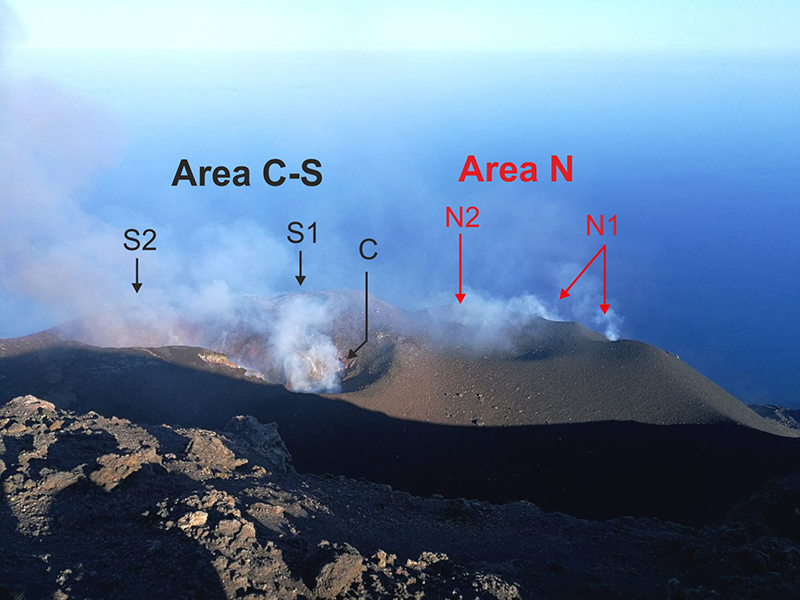Major explosive eruption at Stromboli volcano, Italy

A major explosive eruption took place at Stromboli volcano, Italy at 13:19 UTC on July 14, 2021. Volcanic material fell back to Sciara del Fuoco and reached the Pizzo area.
From a seismic point of view, this explosive event was clearly visible at all Stromboli seismic stations.
With regard to the magnitude of the volcanic tremor, an increase was observed at 12:30 UTC with a maximum peak on average-high values around 13:00 UTC.
The tremor amplitude has returned back to mid-low values after the eruption.
According to the INGV, activity at Stromboli volcano from June 28 to July 4 was characterized by ongoing explosive activity from three vents in Area N (North Crater area) and four vents in Area C-S (South-Central Crater area).
Explosions from the N1 vent (Area N) ejected lapilli and bombs 150 m (490 feet) high, and produced minor ash emissions.
Explosions at N2 vents (Area N) averaged 4 – 10 events per hour and ejected material 80 m (260 feet) high; spattering was intense on June 28. Explosions from the S2 vents in Area C-S occurred at a rate of 5-8 events per hour and ejected coarse material more than 150 m high.


Image credit: INGV

Photo of the summit craters at Stromboli showing the North and Central-South crater areas with the location of each active vent: N1 and N2 in the N crater and S1, S2, and C in the CS crater. The photo was taken from the Pizzo sopa la Fossa during an expedition on August 22, 2020, by INGV-OE personnel. Image credit INGV
Geological summary
Spectacular incandescent nighttime explosions at this volcano have long attracted visitors to the "Lighthouse of the Mediterranean."
Stromboli, the NE-most of the Aeolian Islands, has lent its name to the frequent mild explosive activity that has characterized its eruptions throughout much of historical time.
The small, 924-m-high (3 031 feet) island is the emergent summit of a volcano that grew in two main eruptive cycles, the last of which formed the western portion of the island.
The Neostromboli eruptive period from about 13 000 to 5 000 years ago was followed by formation of the modern Stromboli edifice. The active summit vents are located at the head of the Sciara del Fuoco, a prominent horseshoe-shaped scarp formed about 5 000 years ago as a result of the most recent of a series of slope failures that extend to below sea level.
The modern volcano has been constructed within this scarp, which funnels pyroclastic ejecta and lava flows to the NW. Essentially continuous mild strombolian explosions, sometimes accompanied by lava flows, have been recorded for more than a millennium. (GVP)
Featured image credit: INGV

Commenting rules and guidelines
We value the thoughts and opinions of our readers and welcome healthy discussions on our website. In order to maintain a respectful and positive community, we ask that all commenters follow these rules:
We reserve the right to remove any comments that violate these rules. By commenting on our website, you agree to abide by these guidelines. Thank you for helping to create a positive and welcoming environment for all.